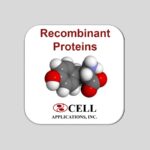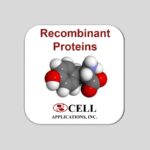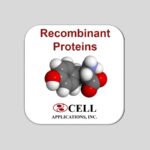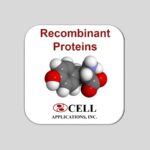Anti-UBC9/UBE2I: Mouse UBC9/UBE2I Antibody
Mouse UBC9/UBE2I Antibody: Mouse UBC9/UBE2I Antibody
Size: 100 ul
Price: $457.00
Description
UBC9 is an E2-conjugating enzyme essential for sumoylation, and it transfers the activated SUMO to protein substrates. In particular, UBC9 has been shown to play a key role in nuclear trafficking, transcriptional regulation, and protein stability through regulation of the sumoylation machinery. In addition, studies indicated that UBC9 is a multifunctional protein that can exert its functions independent of sumoylation. Many important proteins, including tumor suppressors and oncoproteins, as well as the cell cycle and proliferation-related proteins, are targets for sumoylation or interact with UBC9; their expression or their activity is regulated by UBC9. Thus, alterations of UBC9 could ultimately have an impact on cell growth and cancer development. UBC-9 activity is required for several developmental processes including embryogenesis, and the DNA damage response (both DNA repair and DNA damage checkpoint function); UBC-9 interacts with LIN-1, an ETS-domain-containing transcription factor that negatively regulates vulval development. Additionally, several studies indicate that UBC9 plays a role in tumorigenesis and drug responsiveness. Furthermore, autosumoylation of UBC9 at Lys14 regulates target discrimination.2 While not altering its activity toward HDAC4, E2-25K, PML, or TDG, sumoylation of UBC9 impairs its activity on RanGAP1 and strongly activates sumoylation of the transcriptional regulator Sp100. Enhancement depends on a SUMO-interacting motif (SIM) in Sp100 that creates an additional interface with the SUMO conjugated to the E2, a mechanism distinct from UBC9∼SUMO thioester recruitment.3
UBC9 is a single-copy gene and is ubiquitously expressed in all human organs and tissues. However, levels of UBC9 vary in different organs or tissues. In tumors UBC9 is frequently up-regulated. For example, UBC9 is up-regulated in lung adenocarcinoma, as detected by microarray analysis. It was shown that UBC9 expression is subjected to microRNA regulation at the posttranscriptional level, where miR-30e negatively regulates UBC9 expression by translation repression, which may be responsible for the frequent UBC9 overexpression in tumors.4
2. Knipscheer, P. et al: Mol. Cell 31:371-82, 2008
3. Subramaniam, S. et al: J. Biol. Chem. 285:20428-32,2010
4. Wu, F. et al: Clin. Cancer Res. 15:1550-7, 2009
Details
| Cat.No.: | CP10431 |
| Antigen: | Raised against recombinant human UBC9 fragments expressed in E. coli. |
| Isotype: | Mouse IgG1 |
| Species & predicted species cross- reactivity ( ): | Human, Mouse, Rat |
| Applications & Suggested starting dilutions:* | WB 1:1000 IP 1:50 IHC 1:50 – 1:200 ICC n/d FACS 1:50 – 1:200 |
| Predicted Molecular Weight of protein: | 18 kDa |
| Specificity/Sensitivity: | Detects endogenous UBC9 proteins without cross-reactivity with other family members. |
| Storage: | Store at -20°C, 4°C for frequent use. Avoid repeated freeze-thaw cycles. |
*Optimal working dilutions must be determined by end user.




